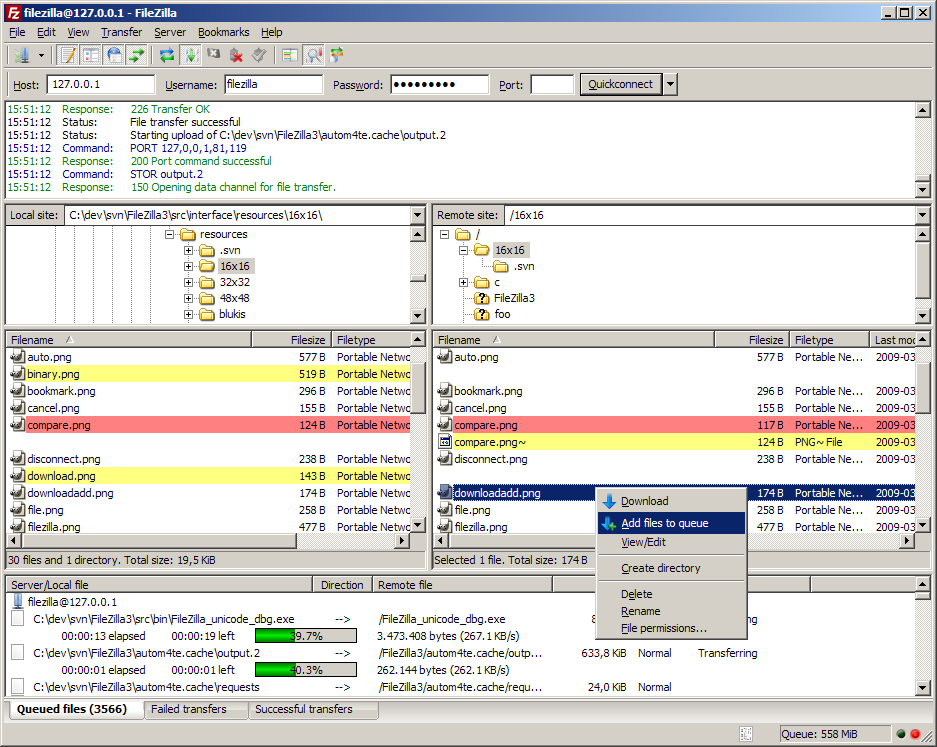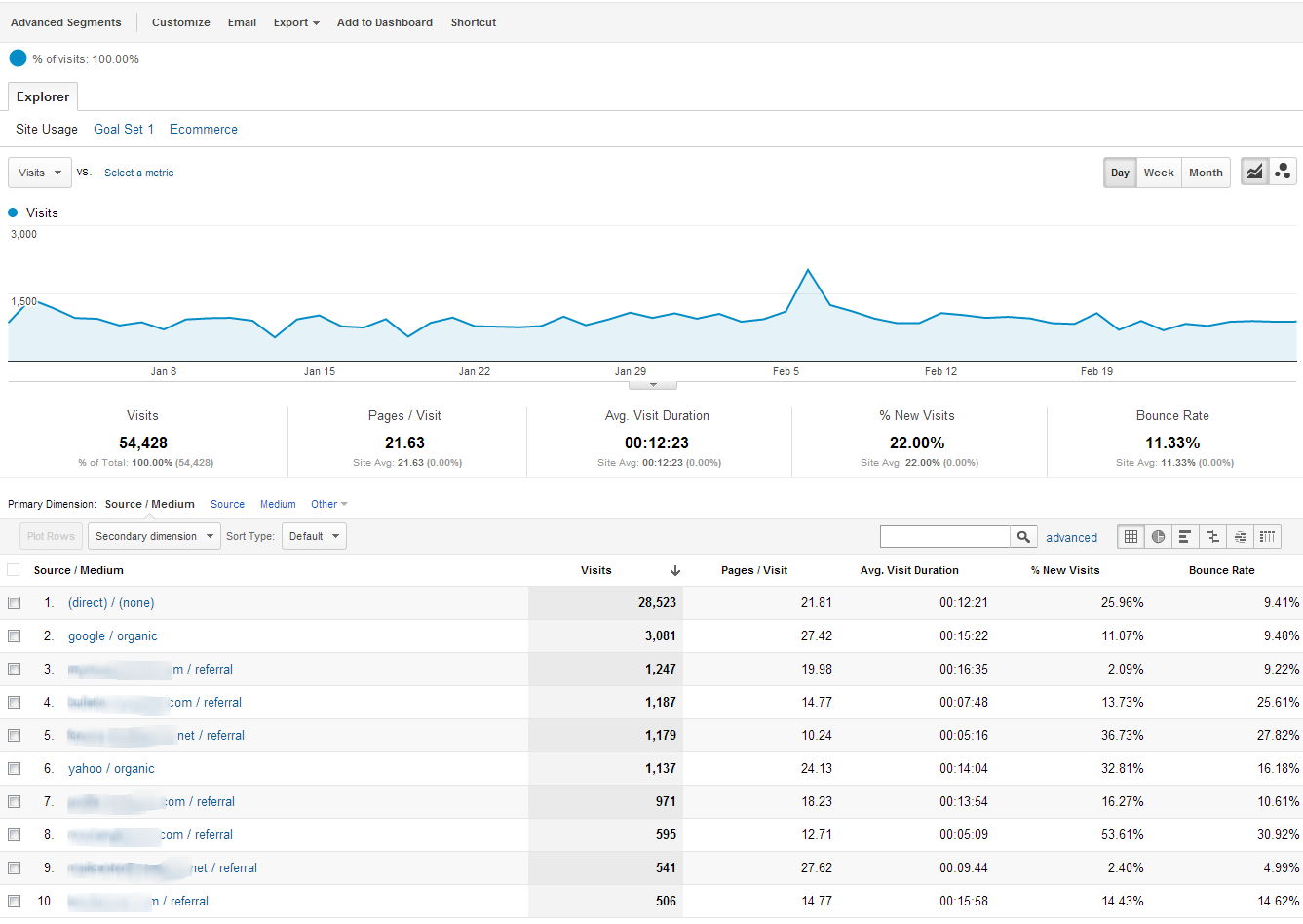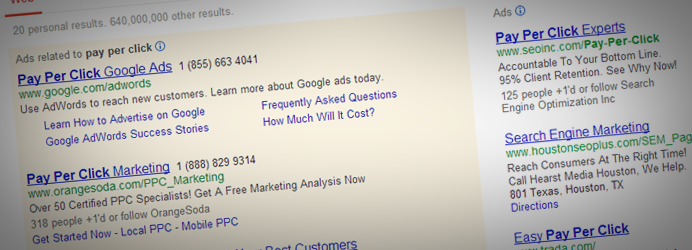A – Z List of Digital
Marketing Acronyms
by chris makara
Unfortunately, acronyms are synonymous with nearly every industry. Digital marketing is no different. Therefore, I have put together an A-Z list of some of the more important acronyms in the digital space that you need to know the meanings of. We have quite a bit to get to, so let’s jump right in…
API
Application programming interface, commonly referred to as API. An API essentially allows platforms (sites) to connect to each other. While I could try to write something out to explain this concept, I feel the video below does a good basic overview of how an API works.
B2B, while not strictly a digital marketing acronym, this simply means “business to business“. This typically is referring to the type transaction that is taking place. A B2B transaction takes place when a product, service, or information is exchanged between two businesses rather than between a business and a consumer (known as B2C).
CMS
Content management system, which uses the acronym CMS is typically a platform that is used to organize data in an easy to use interface. Most commonly, a CMS is used to create and power many websites. In fact, my site uses WordPress, a CMS that among the most popular. Here is a great list of the 10 most popular CMS platforms.
DNS
DNS is the acronym for domain name system. The way DNS works is that it simply translates the domain and host names to IP addresses. For example, when you type in a domain name in your browser’s URL bar, the DNS will take the domain name and translate it to the IP address of the host of the website which in turn serves up the files/site that are stored on that server.
EPC
Earnings per click (EPC) which is used in affiliate marketing, helps affiliates understand what they can expect to earn for each click they generate as an affiliate. In order to calculate EPC, you will need to know the following information:
- The price of the product you are selling
- The commission an affiliate earns each time they sell your product
- The net number of sales an affiliate has made (total sales – number of sales = net number of sales)
- The number of times your affiliate link has been clicked
Let’s take the four bullet points above and provide some values.
- Product price: $100
- Affiliate commission received for each sale: $10
- Net number of sales: 25
- The total number of clicks on affiliate link: 500
Finally, let’s do some math to figure out the EPC.
($100 x 25) divided by 500 Clicks = $5 Earning Per Click (EPC)
FTP
FTP, which is the acronym for file transfer protocol, is not to be confused with “F The Police!”. In order for computers to transfer files between each other, an FTP program can be used. Most commonly, it is used to transfer files from a computer to a web server. For example, a developer may create a site on their localhost and when it is ready they will need to upload it to the website server. To do this, they would use an FTP program such as Filezilla (my choice of FTP programs).

Photo credit: Filezilla
GA
A staple acronym of the digital marketing space, GA, short for Google Analytics is one tool you should be very familiar with. In the most simplistic terms, GA will allow you to have deep insights into your website visitors. You can measure things like time on site, number of pageviews, traffic sources and more. GA even has custom reports and segments that will allow you to really slice and dice your metrics data to your heart’s content.

Sample Google Analytics Dashboard | Image Credit Christ Makara
HIPPO
Quite possibly my favorite digital marketing acronym, HIPPO simply means “highest paid person’s opinion“. I think I first came across this when readingAvinash Kaushik’s blog. I don’t remember the specific blog post, but it is found throughout his site as well as in his book “Web Analytics 2.0“.
Essentially, a HIPPO is someone in an organization who imposes their own opinions on you and the company. Often, they think they know best and by having a presence prevent other ideas or tactics from happening.
IM
Instant Messaging, commonly referred to as IM simply provides a means to easily communicate with others. While there are many messaging platforms, some of the most common ones are Skype, Google Talk, Windows Live Messenger, or Yahoo! Messenger.
IM was once used for friends to chat with each other, but now is used widely in business situations. Check out the infographic for some pretty amazing numbers regarding IM.
JSP
Created by Sun Microsystems, Java server pages, or JSP, is a web programming language that allows for dynamic web page generation. These web pages are commonly based on HTML or XML and need to run on a webserver that uses Apache Tomcat or Jetty.
KPI
Key performance indicator, known to many as KPI, is simply a measurement that is commonly used to measure success. While it is much more involved than that, I’ll leave it up to someone more apt to speaking towards the intricacies of KPI’s.
This acronym is a rather important one. LTV, which stands for lifetime value, is a number that represents the estimated revenue of a customer throughout their lifetime as a customer. Essentially, based on average order size/amount spent and the length of them being a customer, you can determine what your LTV is. For a more detailed explanation, see the infographic below.

Source: Kissmetrics
MVT
If you aren’t testing, you aren’t trying! Well, something along those lines.Multivariate testing (MVT) takes place when you test multiple elements within a landing page in order to determine what combination produces the highest conversion rates. Most commonly tested elements are font color, CTA button colors, amount of form fields, and headlines. In order to reach statistical significance, MVT should only be used on very high traffic sites. MVT can be accomplished by using third party platforms such as Ion’s Liveball.

Source: Chris Makara
NM
Niche marketing (NM) is frequently mentioned within digital marketing circles. When a target audience or group is identified, a NM is defined. Typically, a NM is a subset of a larger, more broad audience. For example, a large audience might be “sports cars” while a NM of it would be “Ford Mustangs”.
By targeting a NM, you are typically able to see better results than if you target a larger audience which commonly are more competitive.
OS
Open source (OS), is commonly used in software development. OS occurs when the source code of a software is made available to be used or modified from its original state. In most OS instances, the community of developers work with each other to improve the code and improve the platform. Some of the most common OS CMS platforms (see what I did there, combined acronyms!) are WordPress, osCommerce, and Joomla.
PPC
One of the more standard digital marketing acronyms, Pay per click (PPC) refers to a form of paid advertising. PPC advertising works primarily upon the concept of bidding on certain keyword phrases against your competitors that result in you paying a fee for each click that is generated. Google Adwords is the most popular PPC option, with Bing Ads and Facebook Ads as other viable options. Depending on your overall strategy, you might explore something like Stumbleupon’s Paid Discovery, LinkedIn Ads, or Youtube Video Ads.

PPC – Pay-Per-Click Advertisements | Source: Chris Makara
QR Code
Quick response code (QR) was originally created by Toyota of Japan in 1994. Since its initial intended use, QR Codes have migrated into the smartphone world. Most commonly, QR Codes are used in places where mobile devices are utilized rather than a computer. For example, QR Codes are found on billboards, flyers, business cards, and vehicle advertisements.

Sample QR Code | Source: Chris Makara
RSS
While some refer to RSS as rich site summary, I go with the more common meaning of really simple syndication. Basically, RSS is a format that consists of data (like blog posts on a website) that can be accessed using an RSS reader. Using a reader, you are able to stay up to date on a website without ever having to visit it. One of the more common RSS readers, is Google Reader. To see how RSS feeds work, simply add my RSS feed to your reader. Then when I update my site, you will see the new blog post in your feed reader.
SEO
Search engine optimization (SEO), is probably the most well-known digital marketing acronym. Essentially, SEO is the processes involved in helping a website rank higher in the organic results of a search engine. There are two basic parts of SEO; on-site SEO and off-site SEO. On-site SEO covers items that happen on a website like page titles, meta descriptions, page load times, sitemaps, alt-text, etc. While off-site SEO is primarily tasks that occur away from your website which mainly focused on various types of link building. For a more detailed explanation of each, please see the SEO infographic below.
TL;DR
Have you ever read something (like this blog post) that seemed to be too long, so you didn’t bother reading it? TL;DR, simply means “too long; didn’t read“. While this acronym is commonly found all throughout teh interwebs, it can often be found in various blog comments of posts that were rather lengthy where the reader simply bypassed the article content and went straight to the comments.
UX
User experience (UX), refers to the experience or interaction a user has with a website. For example, UX can consist of a website layout, navigation, images, colors, actions, and ultimately how it works together for the end user. A positive UX on your site will help ensure that visitors are able to find what they need easily without being confused. Just take a look at this horrible UX (IMHO)…
VM
Chances are that you have heard of something going viral (no I am not referring to the latest flu outbreak). Viral marketing (VM), is simply referring to the concept of marketing that essentially starts with a small group of people (or a single person) and ultimately transcends to reach a huge audience much like a virus does.
Over the years, before YouTube and other social channels, VM commonly took place through email. If you have been around long enough, you might remember the many chain letters you would get via email. For whatever reason, many of these chain letters said you had to pass on the letter to a certain number of people, or something bad would happen to you real soon. Luckily, most of those have died off!
There are many ways that VM occurs today; whether it is through a great social media strategy (be sure to properly track your social media metrics), shareable images, and most commonly through a video. A great example of VM that occurred recently is the video by DollarShaveClub.
Another one of my favorite digital marketing acronyms is WYSIWYG because it is fun to say! Pronounced as “wiz-ee-wig”, the acronym stands for “what you see is what you get“. WYSIWYG refers to the ability to see what something will be formatted as on your screen for others or even in print. For example in a WYSIWYG interface, bold, underline, color, and line spacing are commonly displayed as they will render for print or screen.
XML
Extensible Markup Language, simply referred to as XML, is a markup language (like HTML) that can be read by both people and machines. XML was designed to carry data, not display it whereas HTML does. This text based data is structured in XML so that it can be easily used for other various applications. In fact, XML is used to create API’s and RSS.
YOY
When working with data sets, it is common to want to know how the current data compares to the same time frame from the past. Many times, year over year (YOY) data is used to compare the differences in the data. Simply by using YOY comparisons, you can see how this data changes each year.
ZZZ
While not really a digital marketing acronym, ZZZ is the best I could think of aside from making one up. ZZZ is commonly used in IM and chats to mean “boring”, “tired”, or “sleepy”. It seemed fitting if you made it this far in my list of acronyms, you might be getting ZZZ or there is a slight chance you really enjoyed this list!








